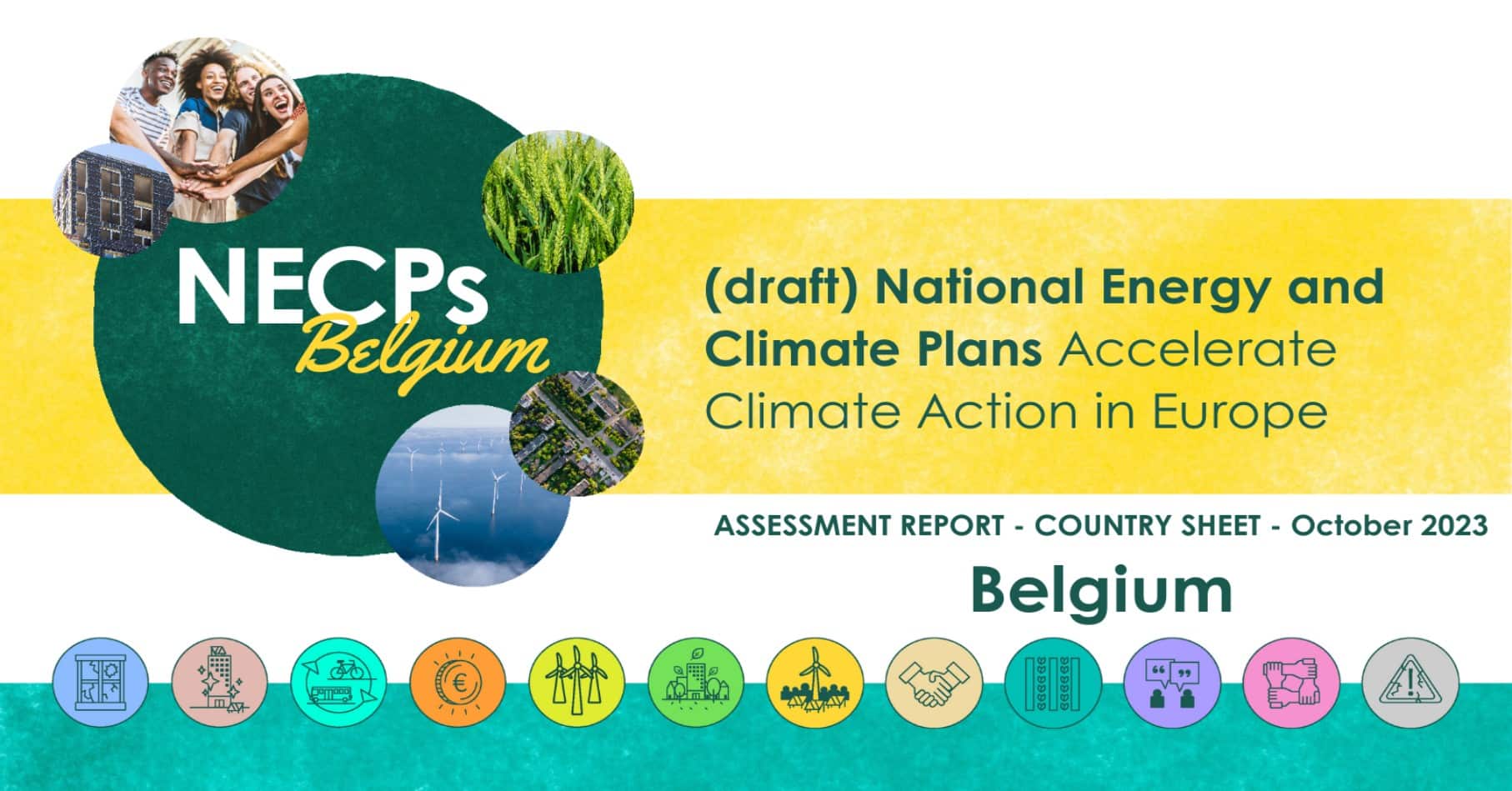Belgium has not submitted its draft National Energy and Climate Plan (NECP) update due to the lack of an agreement between its governments, as of 30 September 2023. This assessment is based on the draft plans from the various entities (Flanders, Wallonia, Brussels and Federal). Belgium overall does not strive towards a 1.5°C trajectory. With the current regional plans, Belgium would not fulfil the EU requirements for climate effort sharing. There is not enough information available with regards to energy efficiency and renewables. Planned policies and measures (PAMs) are likely not enough to achieve the non-Emission Trading System (non-ETS) target.
RECOMMENDATIONS
- Increase climate targets, at least up to the 2030 target set in the ESR;
- Add more measures to bridge the gap between climate targets and PAMs, and improve clarity of their impacts on reducing emissions;
- Improve current lack of coordination and integration across sub-governments.
Climate Ambition
In Belgium, the only binding national target is the 2030 non-ETS target set in the Effort-Sharing Regulation (ESR). Combining the targets currently available in all the governments’ draft NECPs will likely result in a non-ETS 2030 target of -43% (compared to 2005 levels), which would fall short of meeting the -47% target set in the ESR, let alone its fair contribution to tackle the climate crisis. Flanders, the biggest emitting region, sets the bar too low (40%). All of the other entities have set goals in line with the ESR target (-47%). This is demonstrative of Belgium’s poor governance of climate policy, with governments formulating sub-national targets and policies before discussing national ones.
A worrying gap is also expected between climate targets and the policies planned to achieve them. The regional plans do not detail the impact of PAMs on emissions, nonetheless, shortfalls are to be expected in the buildings and transport sectors, where Wallonian and Flemish plans either lack ambition or have not developed sufficient PAMs. Important interfederal policies (notably related to energy taxation and subsidies) have also not progressed.
Energy Transition
At the moment, there is no information about Belgium’s national renewable energy contribution to the overall increased EU renewable energy target. Negotiations are ongoing regarding how such contributions will be spread across the various regions and entities. Ambition was raised both in Flanders and Wallonia compared to 2019, but it is not possible to evaluate to which extent. Only few additional policies have been announced to back it up.
At the moment, there is no information about Belgium’s overall energy efficiency contribution to the overall increased EU energy efficiency target. This contribution should surpass a minimum reduction of energy consumption of at least 33.77 Mtoe for primary energy and 28.78 Mtoe for final energy in line with the EU energy efficiency target, as per formula benchmark of the new 2023 Energy Efficiency Directive (EED). However, both draft plans indicate slightly more ambitious objectives for final energy consumption per region compared to previous benchmarks, but it is not possible to evaluate to which extent.
FALSE SOLUTIONS ALERT
- The hydrogen hype is all over the place – including at the federal level, which projects high consumption levels of low-carbon (i.e. derived from fossil gas) hydrogen and derived fuels in 2050. 20 hydrogen stations are also planned for road transport by 2030. Hydrogen must only be renewables-based and, being a limited source, its use should be limited to industrial needs.
IS MONEY WHERE THE MOUTH IS?
- Unclear. Individual measures sometimes include budgetary implications and projected sources of income, but more comprehensive overviews of investment needs and funding sources are not included in the regional plans.
SNEAKY SUBSIDIES
- At the federal level, a comprehensive inventory of fossil fuel subsidies has been published twice. There is a plan to phase them out by 2030, but concrete timelines and targets are missing. At the regional level, the situation is less clear.
PUBLIC PARTICIPATION
- Public consultations took place with a varying degree of quality. Strong and broad engagement of stakeholders took place in Wallonia and Brussels, while in Flanders and at the federal level, the process was poor and without discussions on scenarios.
- Regional coordination in the NECP drafting process in Belgium has been insufficient, due to dysfunctional multilevel procedures used to coordinate across the various entities. As a consequence, the NECP update risks being a poorly readable and poorly coordinated synthesis of the various sub-plans.
Download belgium country sheet NECP assessment report
Download FULL NECP assessment report
PREVIOUS
NEXT

